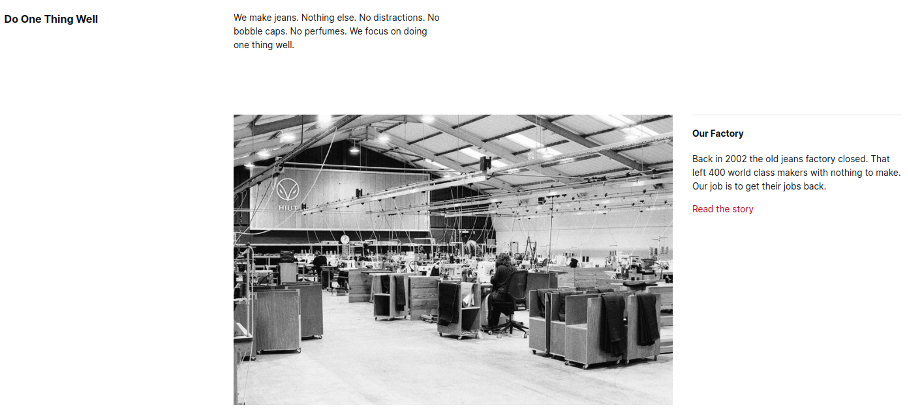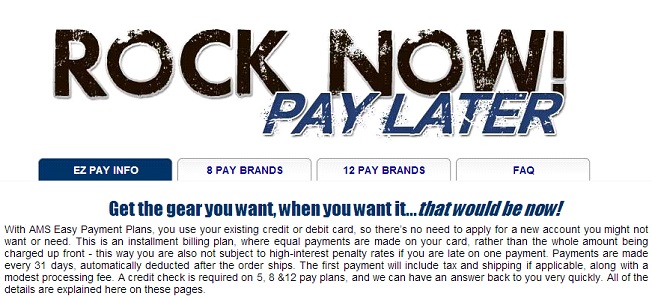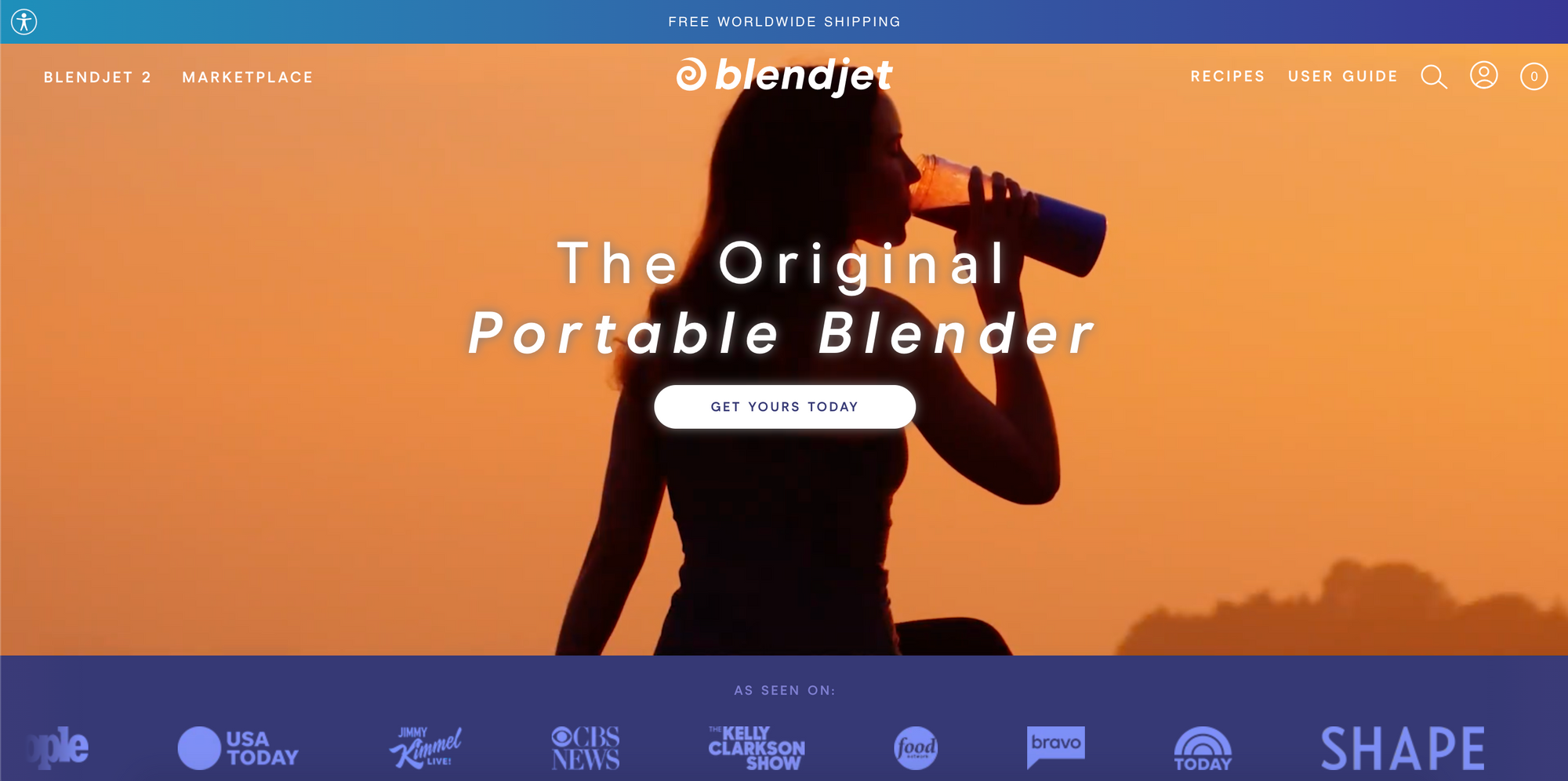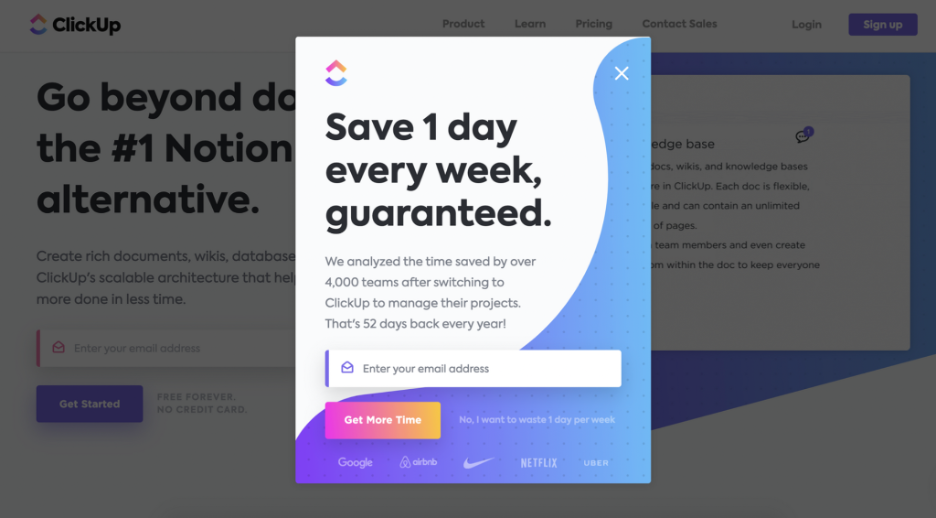- Blog
- What Is a Unique Selling Proposition (USP)? +15 Real Examples
What Is a Unique Selling Proposition (USP)? +15 Real Examples
-
Nikolett Lorincz
- Marketing
- 6 min read
Table of Contents
Every ecommerce or small business has something that sets it apart—but unless you communicate that clearly, your edge may go unnoticed.
That’s where your unique selling proposition (USP) comes in. A strong USP helps you attract the right customers, highlight your biggest strengths, and stand out in a crowded market.
In fact, 68% of consumers say a brand’s unique value proposition strongly influences their decision to buy—especially in competitive categories.
In this post, we’ll go over what exactly a unique selling proposition is, and we’ll examine 15 strong USP examples and tips that will inspire you to create your own.
Let’s dive right in!
What is a unique selling proposition?
A unique selling proposition (USP) is a short, clear statement that explains what makes your product, service, or brand different from the competition.
It highlights a specific benefit or quality that your business offers—and others don’t.
Most USPs are 10 words or fewer and focus on what your ideal customers truly care about.
How is a USP different from a slogan?
Many business owners confuse USPs with slogans, but there’s an important distinction. Slogans are often catchy but vague—like “Taking your business to the next level.” It sounds good, but it doesn’t explain why someone should choose your brand.
Compare that to Sirius XM’s USP: “180+ channels, commercial-free music.” It instantly communicates a clear, specific benefit. A good USP gives customers a reason to act, while a slogan often just sets the tone.
What characteristics make a compelling USP?
Here are the key features that contribute to a compelling USP:
- Assertive and defensible: It takes a specific position that forces you to make a persuasive case against competing products or companies. This assertiveness makes it more memorable and impactful compared to generic statements like “We sell high-quality custom products.”
- Customer-oriented: A compelling USP is focused on what your target customers truly value. It goes beyond being merely “unique” and delves into addressing a specific need or desire your customers have. By aligning with their values, your USP becomes more relevant and appealing.
- Holistic and versatile: While a USP can be communicated through a memorable slogan, it should also extend beyond that. A compelling USP can be integrated into various aspects of your business, such as your return policy, supply chain, or overall customer experience. This consistent representation of your USP reinforces its impact and sets you apart from competitors.
- Unique messaging: It’s not always necessary for the products or services you offer to be entirely unique. Instead, the focus should be on the messaging or aspect of your business that your competition does not emphasize. By highlighting this unique message, you differentiate yourself in the market and attract customers who resonate with your distinct values or approach.
15 strong unique selling proposition examples and why they work
Let’s take a look at some effective unique selling proposition examples.
1. Bee’s Wrap: “A Simple Solution to Plastic Pollution”
Bee’s Wrap sells reusable food wraps that are made from cotton, beeswax, and tree resin to replace plastic wraps.
The name of the company, “Bee’s Wrap,” already denotes natural, healthy products, and their USP reinforces the environmental benefits of using their wrap.
Thus, they’re able to position themselves as solving a problem that no one likes—plastic pollution—differentiating themselves from their competition.

2. FedEx: “When it absolutely, positively has to be there overnight”
FedEx used this strong unique selling proposition between 1978 and 1983. And it’s been taught in business schools ever since.
The whole point of FedEx is getting packages from one place to another, quickly and reliably. They state this clearly in their USP.
The repetition “…absolutely, positively…” subtly draws attention to the fact that FedEx knows the importance of overnight shipping for their customers. And they promise to deliver.
Check out this hilarious FedEx ad from 1983, which shows how they were able to build an entire marketing strategy around a great USP:
3. Hiut Denim Co.: “Do one thing well”
It’s tough to create a USP if you’re a denim manufacturer, because your competitors’ products likely look very similar to yours.
Hiut Denim Co. used an interesting tactic to concoct a winning USP: they simply boasted that they make jeans…nothing else. This statement sews the idea that if a company is devoted to just one task, they can master it.
Furthermore, it implies (without saying so explicitly) that any company that makes both jeans and other types of products isn’t fully committed to making denim clothing. In the consumer’s mind, this translates to a lesser-quality product.

4. Bellroy: “Slim your wallet without turning your world upside down”
Bellroy’s USP plays on the importance of wallets in our everyday life.
They offer slimmer, less obtrusive wallets that won’t make you feel like you’re losing anything by switching over to their product.
This value proposition is clever because it not only highlights their most important differentiating factor (how slim their wallets are), but also addresses common customer worries, like “can I fit everything?” or “isn’t changing to a new wallet too much trouble?”
And they do it all in a single sentence. Pretty impressive!

5. American Musical Supply: “Rock now! Pay later.”
This is one of the best examples of how a USP can reflect a company’s brand and culture.
American Musical Supply is an online retailer of musical equipment. And they know that their customers want to buy expensive items without breaking the bank (especially people starting a new musical hobby, beginners in school, or shoppers on a tight budget).
When their customers realize they can use a payment plan, they start to shop more freely without limiting themselves to a certain price point.
This USP speaks to what matters most to American Musical Supply’s customers—getting the right gear, right now.

6. WooCommerce: “The most customizable eCommerce platform for building your online business”
The company’s USP works for two reasons. First of all, the superlative (“the most customizable”) instantly raises it above the competition.
But perhaps more importantly, it also speaks to an aspect of website building that potential customers worry about: whether their site will look too formulaic or “cookie-cutter.”
WooCommerce successfully builds their USP around an aspect of their service that people care about.

7. Domino’s Pizza: “We GUARANTEE – Fresh hot pizza, delivered in 30 minutes or less or it’s FREE!”
Domino’s Pizza has a memorable USP that consumers associate with the brand.
Their specific promise, which they frame as a guarantee, allows customers to form concrete expectations about their service. It’s also not something you’re used to hearing from delivery services, which makes it stand out.
Finally, the rhyme in their USP (“guarantee” and “free”) helps a customer remember it. People remember rhyming sentences much more easily than sentences that don’t rhyme.

8. Pureformulas: “Orders placed before 6 pm EST ship the same day”
Pureformulas’ unique selling proposition is tailor-made for people who care about their vitamins and supplements. They know that their customers don’t want to miss taking them, even for a single day.
That’s why their USP, with its promise of same-day shipping, perfectly meets their customers’ needs and differentiates them from their competitors.

9. Best Buy: “Find a lower price and we’ll match it”
Best Buy’s famous USP helped define them as a brand. Since consumers usually can’t get a lower price than the sticker price—especially in electronics stores—Best Buy’s USP promises something unique: an unfettered ability to price match.
Interestingly, the subtext of the USP adds another layer: it’s almost like a challenge. Best Buy implies that you won’t be able to find lower prices, because theirs are the best.

10. Warby Parker: “Try 5 frames at home for free”
Warby Parker’s clever USP solves the biggest problem with buying glasses in an online store: it’s very hard to imagine what you’d look like in a pair of glasses without actually trying them on!
That’s why their offer to try on five different frames for free is so effective. They’re eliminating the risk involved with choosing a pair of frames online—if the customer isn’t thrilled with the first pair, it’s no big deal… they’ve also got four other options.

Recommended reading: How Warby Parker Reached a $3 Billion Valuation and Became an Ecommerce Giant
11. GEICO: “15 minutes could save you 15% or more on car insurance”
Just like FedEx, GEICO uses repetition in its USP to make it more memorable: 15 minutes and 15 percent.
This highlights the benefit new customers can expect by switching to GEICO from their current insurance providers. When you combine their USP with GEICO’s other memorable marketing efforts, you can see why they became such a successful business.

12. TOMS Shoes: “⅓ of profits for grassroots good”
TOMS Shoes has a unique USP in their industry. They make a genuine promise to their customers that they’ll reinvest 1/3 of their profits into grassroots efforts.
Their promise isn’t a vague claim. They specify that they support people by building equity at the local level, and driving progress from the ground up.
This USP helps a customer feel great about their purchases.

13. M&M’s: “Melt in your mouth, not in your hand”
M&M’s USP shows that being slightly offbeat in your selling proposition can yield great results.
When you read it, you might be puzzled at first, but then you remember that M&M’s have that hard shell that protects your hands. At the same time, you might imagine melted chocolate all over your hands from eating other types of candy.
At this point, you can almost taste the chocolate melting in your mouth…
By the time you’re done thinking, M&M’s USP has already worked!

14. Colgate – “Improve mouth health in two weeks”
Colgate’s USP highlights the role of toothpaste for mouth health. They know that their target audience wants an established, reputable brand when it comes to health.
And by making a specific, time-limited promise, “improve mouth health in two weeks,” Colgate projects confidence that they can actually deliver those results.

15. Patch: “Patch helps you discover the best plants for your space, delivers them to your door and helps you look after them”
Patch’s unique selling proposition is a little bit long, but it works because they need to establish what they do for their customers. The company doesn’t have the history and name recognition of FedEx or M&M’s, so they need to be more specific in their USP.
They offer three services: discovery, delivery, and post-delivery assistance.
Notice how their USP complements their slogan: Plants made easy.

4 steps for determining your ideal unique selling point
We’ve gone over some great examples of unique selling propositions. Now, let’s take a look at the steps you need to follow to create your own USP.
1. List your key differences
The first step in coming up with a unique selling proposition is to find aspects of your products or services that your competitors can’t provide or don’t have.
For example, if you’re the only one in your niche market offering free shipping, that could be a part of your USP. Or your products might be more customizable than what other businesses are offering.
Once you have an exhaustive list of what differentiates your company from the rest of your industry, you’ll have tons of options for your USP. But that’s not the end of the process.
2. Research your competition
You also need to research your competition and look at their USPs.
This is another point where making a list is helpful. When you write out the USPs of other businesses in the same category, you’ll be able to see gaps in the market and use them to differentiate your brand.
For instance, if your competitors are focusing on their shipping policies, you could focus on something else.
3. Think about your customers’ needs
Now, it’s time to research your customers’ needs and expectations.
There are several ways to conduct this research:
- You can look at any customer satisfaction data that you’ve already collected from past surveys.
- You can also check out your customer reviews on the internet (and compare them to your competitors’ reviews).
- Another idea is to conduct focus groups with your ideal customer.
Customer interactions are crucial to know your customer expectations. Investing in tools like call center software, CRMs, and customer survey tools always helps in elevating the customer experience that helps to match your customer expectations.
Once you learn what your customers value, you’ll be able to see and solve any pain points that your competitors haven’t even considered.
4. Put it all together
These three steps we’ve just discussed should come together in your unique selling proposition.
The ideal USP should include:
- Something unique about your company
- Something that’s missing from your competitors’ USPs
- Something important to your customers
By looking at your lists, you should be able to find some overlapping ideas that have the potential to feature in your USP.
After you decide which ones you want to highlight in your USP, the last step is to convey them in a catchy sentence with under ten words.
How to find your USP?
Finding your unique selling proposition is not always easy, and you probably have a few competing ideas. Not sure which will work best?
We suggest running an A/B test to find out which USP resonates most with your visitors and potential customers.
Using OptiMonk, you can easily A/B test your unique selling proposition ideas with popups or even optimizing your landing pages with embedded content.
For example, BlendJet uses two different headlines to promote their product: “The Original Portable Blender” vs “The First Self-Cleaning Blender”.


Here’s another example from Obvi.
They have two unique selling propositions: one for visitors who would like to lose weight…

And another for those who want to sleep better:

Click here for a detailed step-by-step guide on how to test your landing page headline with different value propositions.
Once you’ve identified your USP, make sure to communicate it clearly and consistently.
How to promote your USP?
Once you’ve put in all the work to create a great unique selling point for your company, you need to integrate it into your marketing strategy. Make sure people see it and associate it with your brand!
To achieve that, you should highlight your USP everywhere: not just on the homepage of your online store, but also in your ad copy and on your marketing messages, including your popups.
Check out this email popup below that’s shown to new visitors after they’ve spent a little bit of time on the site. It reinforces the USP of the website to make sure that visitors know the unique benefits they offer before subscribing.

Here’s another example from ClickUp. They highlight their USP on a simple yet effective popup, which perfectly matches their brand style guide:

Sticky bars are also a powerful way to highlight your unique selling proposition to visitors who haven’t seen it yet.
For example, you can use a sticky bar to promote your USP. It displays your message without disrupting your visitors’ browsing experience.
If you’d like to learn about popups and how to use them the right way to increase your revenue, check out The Ultimate Guide to Popups.
FAQ
Do products need to be completely unique to have a strong USP?
Products do not necessarily need to be completely unique in order to have a strong USP. Instead, it’s important to identify a specific niche in the market where you can establish your brand as distinct from the competition.
What is not considered a unique selling proposition?
A USP is not simply the headline on your website or a specific marketing offer such as discounts, free shipping, or customer service availability. While these tactics can be effective in persuading customers, they are not inherently unique and can be easily replicated by competitors.
A USP goes beyond these individual elements and encompasses the overall positioning of your business. It should be ingrained in your products, brand, customer experience, and every interaction customers have with your business.
How can a unique selling proposition benefit your business?
A USP helps you distinguish yourself from your competitors and stand out in the market. Having a clear and specific USP also guides your branding and marketing decisions.
Furthermore, a compelling USP influences prospective customers in making purchasing decisions. When you clearly outline the benefits that make your brand or product packaging uniquely valuable, it resonates with your target audience and appeals to their needs and desires.
Summing up
Understanding your unique selling proposition and effectively communicating it to your customers can lead to rapid business growth. It’s all about letting your target audience know what’s special about your products or services.
Hopefully, our list of unique selling proposition examples and our step-by-step guide inspired you to create your own killer USP.
Did we miss any useful tips to create an effective USP? Let us know in the comments!
Learn more
Looking for more tactics that can boost your ecommerce store? Check out these articles:
Migration has never been easier
We made switching a no-brainer with our free, white-glove onboarding service so you can get started in the blink of an eye.

What should you do next?
Thanks for reading till the end. Here are 4 ways we can help you grow your business:
Boost conversions with proven use cases
Explore our Use Case Library, filled with actionable personalization examples and step-by-step guides to unlock your website's full potential. Check out Use Case Library
Create a free OptiMonk account
Create a free OptiMonk account and easily get started with popups and conversion rate optimization. Get OptiMonk free
Get advice from a CRO expert
Schedule a personalized discovery call with one of our experts to explore how OptiMonk can help you grow your business. Book a demo
Join our weekly newsletter
Real CRO insights & marketing tips. No fluff. Straight to your inbox. Subscribe now
Nikolett Lorincz
- Posted in
- Marketing
Partner with us
- © OptiMonk. All rights reserved!
- Terms of Use
- Privacy Policy
- Cookie Policy
Product updates: January Release 2025









